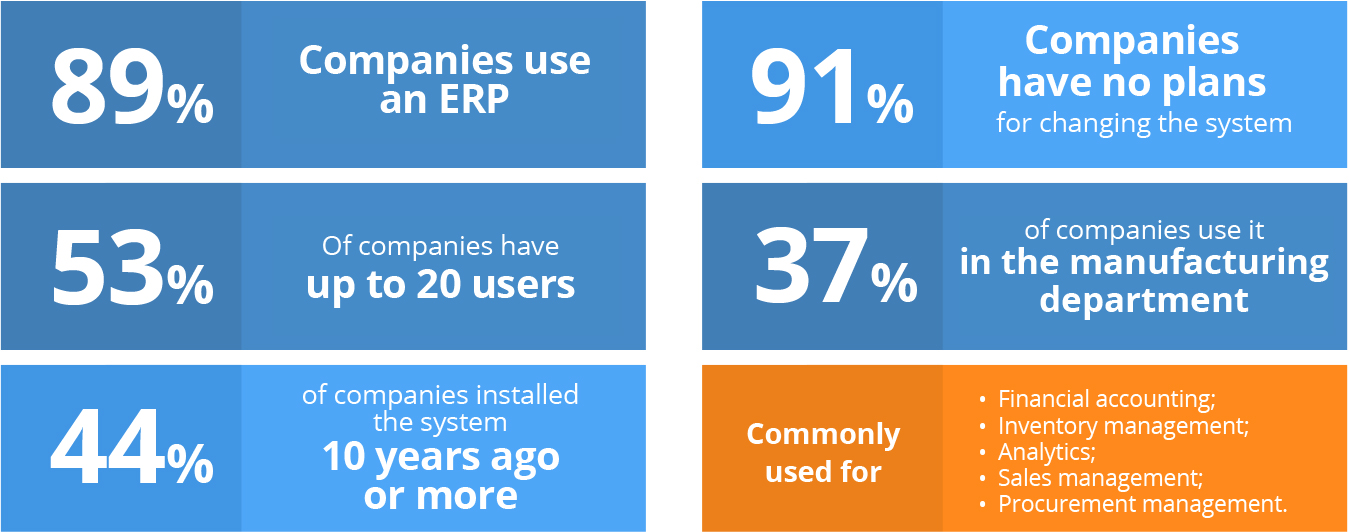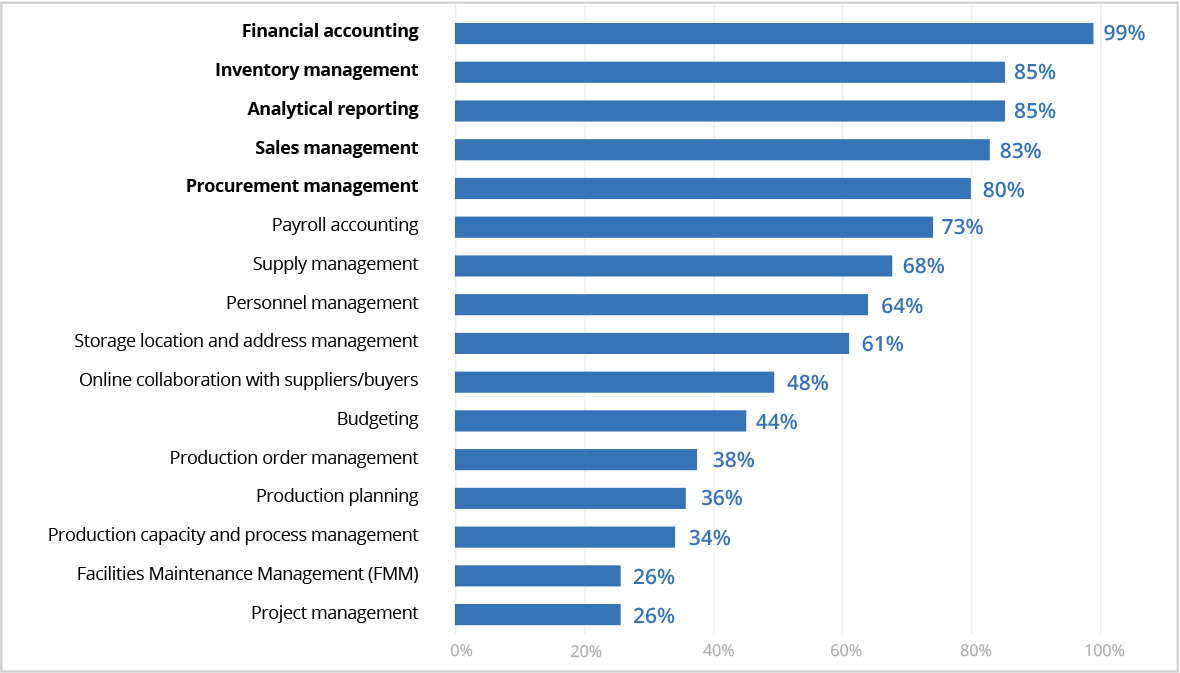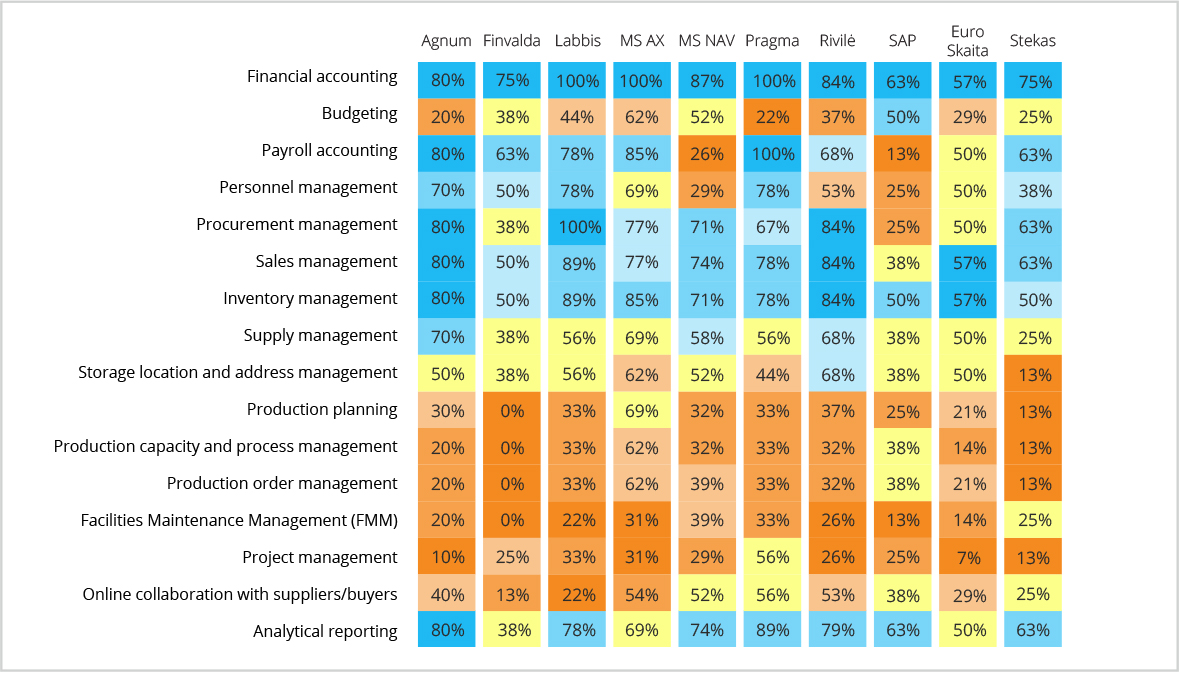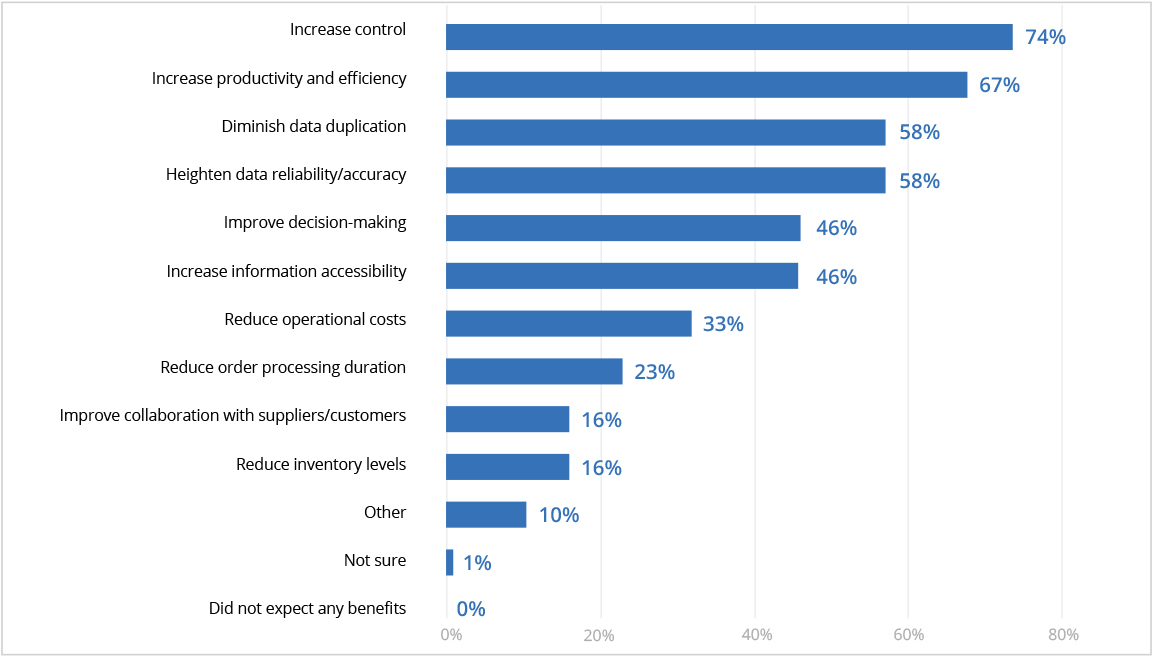Most likely, every company involved in the development or implementation of Business Management Systems (ERP) attempts to create a user profile. They periodically assess whether they are positioning and presenting their product correctly in the market. Identifying "pain points," user habits, and expectations can be valuable not only for refining communication strategies but also for determining license and service pricing.
Simultaneously, businesses could compare themselves to a standard ERP user. It's possible that their expectations from the system, as well as the functionality they plan to utilize, might fall outside the ERP's scope or are seldom implemented.
In 2016, we conducted a quantitative study on the financial accounting and business management systems utilized in Lithuania. Through this study, we identified the typical user of a Lithuanian ERP as follows:
- Loyalty: The EMS was implemented over 5-10 years ago, and there are no immediate intentions to switch to a different system. However, there are considerations for potential changes without necessarily replacing the current system;
- Small number of workstations: up to 20 users;
- Desired benefits from the implementation of the ERP include enhanced control, improved productivity and efficiency, minimized data duplication, heightened data reliability and accuracy, and better decision-making capabilities;
- Most common benefits achieved through the introduction of an ERP: improved decision-making, reduced operating costs, increased data reliability, accuracy;
- The benefits that are least frequently achieved through the implementation of an ERP include: reduced inventory levels, improved collaboration with suppliers and customers;
- Most frequently used functional areas of the FMS are financial accounting, inventory management, analytical reporting, sales management, purchasing management.
Profile of large and medium-sized enterprises using an ERP:

ERP lifetime
Most companies have had an ERP in place for more than 10 years (44%) and 5-9 years (29%). Only 21% of enterprises have had an ERP for less than 2 years.
Plans
Most companies do not plan to change their current system but mainly intend to upgrade the system version (44%) and enhance its functionality (27%). Most enterprises do not anticipate significant changes such as system replacements or acquiring additional workstations: 9% of enterprises intend to procure a new system, 8% plan to add more workstations, and 31% do not anticipate any changes. The average loyalty of the ERP users is 91% (the proportion of respondents who do not plan to change their system).
Number of VMS users
The number of ERP users in enterprises is not high, with 39% of enterprises having up to 9 ERP users, 18% of enterprises with 10 to 20 users and 21% of enterprises with 21 to 50 ERP users.
VMS functionality
Businesses use a wide range of VMS functionalities and respondents rate it positively. Nearly all companies employ an ERP for financial accounting purposes (99%). A significant majority utilize an ERP for managing procurement (80%), sales (83%), and inventories (85%). Moreover, 85% of enterprises use an ERP for conducting performance analytics. Additionally, nearly half of the enterprises leverage functional areas like warehouse location and address management, online collaboration with suppliers/buyers, and budgeting. The least utilized functionalities are project management and facilities maintenance management (FMM).
What are the functional areas of the ERP used by companies?

- Financial accounting functionality is employed by all companies across all systems.
- Budgeting functionality is mainly used in Microsoft Dynamics AX, Microsoft Dynamics NAV and SAP.
- Payroll accounting functionality is mainly used in Pragma, Microsoft Dynamics AX, Agnum, Labbis, Rivilė, Finvalda, Stekas systems.
- Personnel management functionality is mainly used in Labbis, Pragma, Agnum, Microsoft Dynamics AX, Rivilė systems.
- Procurement management functionality is incorporated in nearly all systems, with notable emphasis in Labbis, Rivilė, Agnum, Microsoft Dynamics AX, Microsoft Dynamics NAV, Pragma, and Stekas systems.
- Sales management functionality is integrated into nearly all systems, particularly prominent in Labbis, Rivilė, Agnum, Pragma, Microsoft Dynamics AX, Microsoft Dynamics NAV, Stekas, and Euro Skaita systems.
- Inventory management functionality is used in nearly all systems, with significant prominence in Labbis, Microsoft Dynamics AX, Rivilė, Agnum, Pragma, Microsoft Dynamics, and Euro Skaita.
- Supply management functionality is mainly used in Agnum, Microsoft Dynamics AX, Rivilė, Microsoft Dynamics NAV, Labbis, Pragma systems.
- Storage location and address management functionality is mainly used in Rivilė, Microsoft Dynamics AX, Labbis and Microsoft Dynamics NAV systems.
- Production planning, ordering, capacity and resource management functionality is mainly used in Microsoft Dynamics AX.
- Facilities Maintenance Management (FMM) functionality is used by a minority of companies and is more commonly used in Microsoft Dynamics NAV.
- Project management functionality is not widely used and is more common in Pragma.
- Functionality for online collaboration with suppliers/buyers is predominantly employed within Pragma, Microsoft Dynamics AX, Rivilė, and Microsoft Dynamics NAV systems.
- Analytical reporting functionality is present in all systems, though to a lesser extent in Finvalda.
The data provided below illustrates the percentage of system users utilizing different functional areas of the ERP.
What functional areas does the system use?

Benefits
All respondents stated that they expected to gain benefits from the implementation of the ERP. The primary expectations centered around achieving increased control (74%), increased productivity and efficiency (67%), diminished data duplication (58%), and heightened data reliability and accuracy (58%). There are no major differences in the benefits achieved depending on the system used. The expectations of all users of the ERP are similar, regardless of the system.
What benefits did companies expect to gain from the introduction of the ERP?

